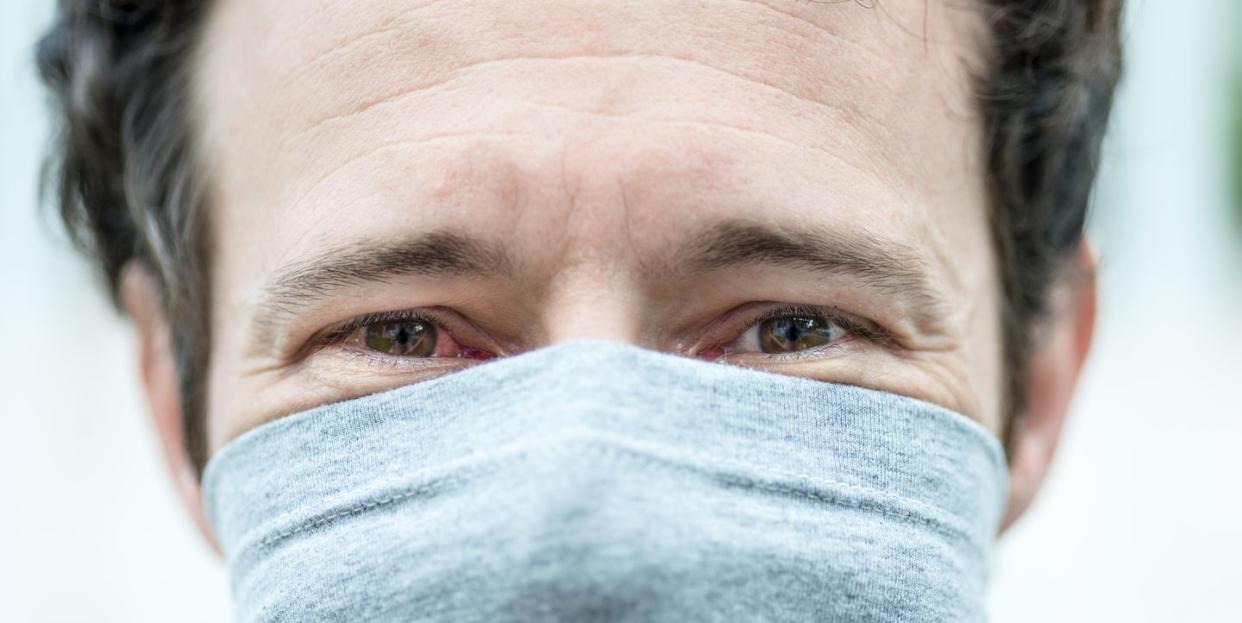Pink Eye Could Be a Sign of COVID-19

Experts are still learning about the novel coronavirus since it was first detected in December 2019. As the virus continues to spread, doctors are discovering new symptoms in addition to the original three biggies: cough, fever, and shortness of breath.
Conjunctivitis—or pink eye—is one recently discovered sign of COVID-19, the disease caused by the novel coronavirus. Pink eye does not appear on the Center's for Disease Control and Prevention's list of symptoms, but you can develop the infection if you get COVID-19. However, pink eye is rare and only associated with about 1 to 3 percent of COVID cases, according to Leela V. Raju, M.D., ophthalmologist and clinical associate professor at NYU Langone Health.
More commonly, COVID patients experience chills, muscle pain, headaches, loss of taste or smell, and a sore throat.
Here's what you should know about the link between COVID and conjunctivitis.
What causes pink eye?
You may think of this as problem for children, but conjunctivitis is very common in adults, according to the Centers for Disease Control and Prevention. The infection is caused by bacteria, allergies, or viruses—including the novel coronavirus.
These germs spread in all the typical ways: close contact with someone who's coughing or sneezing, and touching your face with dirty hands.
Is pink eye a symptom of coronavirus?
It's rare, but the new coronavirus can cause pink eye. The virus is spread through tiny droplets released when a sick person coughs, sneezes, or talks. Generally, patients develop COVID after breathing in these droplets, but it's possible to get infected through your eyes, according to the American Academy of Ophthalmology.
Dr. Raju says the concurrence of pink eye and COVID-19 usually happens when someone touches a contaminated surface and then touches their eye. But you can get sick if someone coughs directly into your unprotected face—which is why social distancing remains important.
"Goggles or other eye protection may be helpful in places where social distancing is not possible," says Dr. Raju.
Some patients develop the typical symptoms and pink eye while others just get conjunctivitis, says Dr. Raju.
What should you do if you get pink eye?
Don't just assume you have COVID-19. Booking a telemedicine appointment will allow you to speak with a doctor who can give a diagnosis, says Dr. Raju. Further, she recommends getting tested for COVID-19 if you suspect more than just a case of conjunctivitis. You should also wear a mask around others, quarantine from those outside your household, and seek care if you are short of breath.
Many cases of viral conjunctivitis clear up on their own within two weeks, according to the CDC.
"To help with any eye discomfort in the meantime, artificial tears can help - keeping them cold in the refrigerator can also help," says Dr. Raju.
Severe cases may require medication—which is why consulting a doctor is important.
As a reminder, the best way to avoid getting sick is by practicing all the basics: washing your hands, wearing a face mask (and goggles if you're extra cautious), and social distancing.
You Might Also Like

